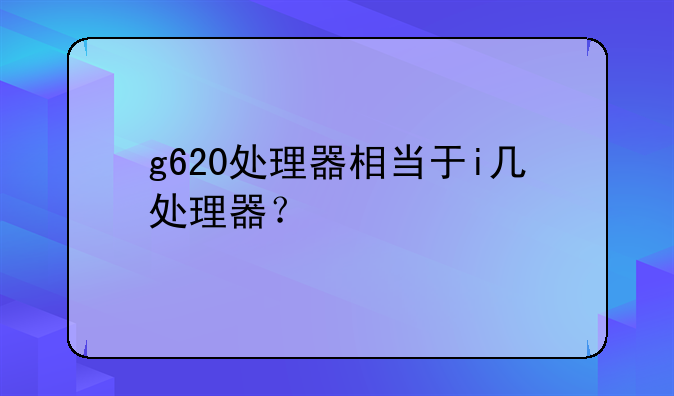不锈钢304#、202#、201#、430#、409# 什么意思
跟着微码库一起了解下isks200的信息,希望可以帮你解决你现在所苦恼的问题。
不锈钢304#、202#、201#、430#、409# 什么意思

中国主要不锈钢牌号最新国家标准
No 中国GB 日本 美国 韩国 欧盟BS EN 印度 澳大利亚AS 中国台湾
旧牌号 新牌号(07.10) JIS ASTM UNS KS IS CNS
奥氏体不锈钢
1 1Cr17Mn6Ni5N 12Cr17Mn6Ni5N SUS201 201 S20100 STS201 1.4372 10Cr17Mn6Ni4N20 201-2 201
2 1Cr18Mn8Ni5N 12Cr18Mn9Ni5N SUS202 202 S20200 STS202 1.4373 - 202
3 1Cr17Ni7 12Cr17Ni7 SUS301 301 S30100 STS301 1.4319 10Cr17Ni7 301 301
4 0Cr18Ni9 06Cr19Ni10 SUS304 304 S30400 STS304 1.4301 07Cr18Ni9 304 304
5 00Cr19Ni10 022Cr19Ni10 SUS304L 304L S30403 STS304L 1.4306 02Cr18Ni11 304L 304L
6 0Cr19Ni9N 06Cr19Ni10N SUS304N1 304N S30451 STS304N1 1.4315 - 304N1 304N1
7 0Cr19Ni10NbN 06Cr19Ni9NbN SUS304N2 XM21 S30452 STS304N2 - - 304N2 304N2
8 00Cr18Ni10N 022Cr19Ni10N SUS304LN 304LN S30453 STS304LN - - 304LN 304LN
9 1Cr18Ni12 10Cr18Ni12 SUS305 305 S30500 STS305 1.4303 - 305 305
10 0Cr23Ni13 06Cr23Ni13 SUS309S 309S S30908 STS309S 1.4833 - 309S 309S
11 0Cr25Ni20 06Cr25Ni20 SUS310S 310S S31008 STS310S 1.4845 - 310S 310S
12 0Cr17Ni12Mo2 06Cr17Ni12Mo2 SUS316 316 S31600 STS316 1.4401 04Cr17Ni12Mo2 316 316
13 0Cr18Ni12Mo3Ti 06Cr17Ni12Mo2Ti SUS316Ti 316Ti S31635 - 1.4571 04Cr17Ni12MoTi20 316Ti 316Ti
14 00Cr17Ni14Mo2 022Cr17Ni12Mo2 SUS316L 316L S31603 STS316L 1.4404 ~02Cr17Ni12Mo2 316L 316L
15 0Cr17Ni12Mo2N 06Cr17Ni12Mo2N SUS316N 316N S31651 STS316N - - 316N 316N
16 00Cr17Ni13Mo2N 022Cr17Ni13Mo2N SUS316LN 316LN S31653 STS316LN 1.4429 - 316LN 316LN
17 0Cr18Ni12Mo2Cu2 06Cr18Ni12Mo2Cu2 SUS316J1 - - STS316J1 - - 316J1 316J1
18 00Cr18Ni14Mo2Cu2 022Cr18Ni14Mo2Cu2 SUS316J1L - - STS316J1L - - - 316J1L
19 0Cr19Ni13Mo3 06Cr19Ni13Mo3 SUS317 317 S31700 STS317 - - 317 317
20 00Cr19Ni13Mo3 022Cr19Ni13Mo3 SUS317L 317L S31703 STS317L 1.4438 - 317L 317L
21 0Cr18Ni10Ti 06Cr18Ni11Ti SUS321 321 S32100 STS321 1.4541 04Cr18Ni10Ti20 321 321
22 0Cr18Ni11Nb 06Cr18Ni11Nb SUS347 347 S34700 STS347 1.455 04Cr18Ni10Nb40 347 347
奥氏体-铁素体型不锈钢(双相不锈钢)
23 0Cr26Ni5Mo2 - SUS329J1 329 S32900 STS329J1 1.4477 - 329J1 329J1
24 00Cr18Ni5Mo3Si2 022Cr19Ni5Mo3Si2N SUS329J3L - S31803 STS329J3L 1.4462 - 329J3L 329J3L
铁素体型不锈钢
25 0Crl3Al 06Crl3Al SUS405 405 S40500 STS405 1.4002 04Cr13 405 405
26 - 022Cr11Ti SUH409 409 S40900 STS409 1.4512 - 409L 409L
27 00Cr12 022Cr12 SUS410L - - STS410L - - 410L 410L
28 1Cr17 10Cr17 SUS430 430 S43000 STS430 1.4016 05Cr17 430 430
29 1Cr17Mo 10Cr17Mo SUS434 434 S43400 STS434 1.4113 - 434 434
30 - 022Cr18NbTi - - S43940 - 1.4509 - 439 439
31 00Cr18Mo2 019Cr19Mo2NbTi SUS444 444 S44400 STS444 1.4521 - 444 444
马氏体型不锈钢
32 1Cr12 12Cr12 SUS403 403 S40300 STS403 - - 403 403
33 1Cr13 12Cr13 SUS410 410 S41000 STS410 1.4006 12Cr13 410 410
34 2Cr13 20Cr13 SUS420J1 420 S42000 STS420J1 1.4021 20Cr13 420 420J1
35 3Cr13 30Cr13 SUS420J2 - - STS420J2 1.4028 30 Cr13 420J2 420J2
36 7Cr17 68Cr17 SUS440A 440A S44002 STS440A - - 440A 440A
哪位英语高手用英语简介一下羽毛球?
I INTRODUCTION
Badminton, game for two or four players using lightweight rackets and a shuttlecock, a cork ball fitted with stabilizing feathers. Players hit the shuttlecock back and forth over a net, trying to keep it from hitting the ground. Some people play badminton outdoors on a level grassy area or beach. However, tournament-level badminton is played indoors on a specially marked court.
Badminton’s governing body, the International Badminton Federation (IBF), has about 140 member nations. The IBF estimates that about 200 million people play the game worldwide and that more than 1,000 players participate in international competition. Badminton’s growth accelerated after the game’s debut as a medal sport during the 1992 Summer Olympic Games. China, Denmark, Indonesia, Japan, Malaysia, and South Korea are just a few of the countries where badminton is popular.
II PLAYING AREA
International rules state that an indoor badminton court must be rectangular, with white lines marked on a level wooden floor or on a special mat that is rolled onto a level playing surface. A singles court is 44 ft (13.41 m) long and 17 ft (5.18 m) wide. For doubles, alleys 1 ft 6 in (0.46 m) wide along the two longer sides of the court come into play, making the court 20 ft (6.10 m) wide. Because many shots fly high into the air, there must be clearance of at least 30 ft (9.14 m) above the court. A net stretched across the middle of the court has a top edge set to a height of 5 ft (1.52 m) at the center and 5 ft 1 in (1.55 m) at the posts.
III EQUIPMENT
Badminton rackets weigh between 3.5 and 5 oz (99 and 141 g) and consist of a leather or terrycloth handle; a long, thin shaft; and a stringed area called the head. Official rules limit the total length of a racket to 26.75 in (67.95 cm). The head of a racket measures 11 in (28 cm) in length and 8.6 in (21.8 cm) in width and is strung with synthetic nylon or gut at between 25 and 35 lb (11.3 and 15.9 kg) of tension. Early rackets were made of wood, but badminton rackets are now commonly made of aluminum, boron, graphite, and titanium.
Tournament-quality shuttlecocks, also called shuttles or birdies, weigh 0.2 oz (5.7 gm) and consist of 16 goose feathers that protrude from one side of a ball-shaped cork base. Most shuttles used by casual players are plastic and have synthetic feathers. Both types of shuttles are 2.5 in (6.4 cm) long. When the shuttlecock is in the air, its aerodynamics cause it to spin so that when players hit it, they almost always strike the cork, not the feathers.
IV SERVICE AND PLAY
Play begins with a serve from a service area on the right-hand side of the court to a receiver in a diagonally opposite service area across the net. To serve, the server stands behind the service line and strikes the cork base of the shuttle in an underhand motion. The receiver must then return the shuttle before it hits the ground, and the players hit the shuttle back and forth until one side fails to return it.
Play ends when the shuttle hits the ground on one side of the court or when one player makes a fault, or error, such as hitting the shuttle into the net or out of bounds. Specific faults for servers include striking the feathers of the shuttle first or serving overhand. The receiver can be faulted for not being within the service court, for not having both feet on the floor when receiving, and for moving before the serve is made.
During play, faults include hitting the shuttle into the roof or lights, hitting it through the net, double-hitting or slinging a shot, touching the net, playing a shot by reaching over the net, and allowing the shuttle to hit the player’s body. Unsportsmanlike conduct—such as intentionally distracting an opponent—will also earn a player a fault.
V SCORING AND OFFICIALS
Points are scored when the opponent fails to return the shuttle, hits it out of bounds, or earns a fault. Points only count for the server (or serving side in doubles), so keeping the service privilege is an important part of the game. If the server loses a rally or makes a fault, the service privilege passes to the opponent. In doubles, this immediate loss of service occurs only at the start of the game. After this first loss of service, each team receives two chances to hold serve. When the first teammate loses serve, the partner serves. If the partner loses serve, the opposing team takes over.
In men’s singles, men’s doubles, women’s doubles, and mixed doubles, the first side to score 15 points is the winner. Women’s singles games are played to 11 points. If the score is tied at 14-14 (or 10-10 in women’s singles) a system called setting settles the outcome. The first side that reached 14 (or 10) elects either to play through, meaning that the next side to win a point wins the game, or to set the game to three additional points, meaning that the first side to reach 17 points (or 13 in women’s singles) wins the game. Each badminton match is a best-of-three-games contest. Average matches last about 45 minutes, but professional matches can last more than 2 hours.
Badminton tournaments involve a number of officials. A referee supervises the tournament organization while an umpire controls each match. Aided by a service judge, the umpire keeps score and rules on faults during play. Up to ten line judges rule on whether particular shots have landed in or out of the court.
VI SKILLS AND STROKES
Badminton requires speed, strength, power, agility, and nerve. Players must move quickly from side to side and back and forth, and stamina is important.
There are six key badminton strokes: the serve, drive, net shot, smash, lift (or lob), and clear. To hit these strokes, players use either a forehand or a backhand grip, depending on court positioning. On the forehand the forefinger acts as a lever and creates power and direction for the stroke. For the backhand the thumb creates this power and direction while placed along the back of the handle.
Many players aim the serve toward the centerline of the opposite service box. This technique limits the angle of the opponent’s return shot. Sometimes players use long, high serves to force opponents to the back of the court. Players also make specialty serves, such as flick serves that barely clear the net or drive serves that are hit down the sideline of the service area, to catch opponents out of position.
Once play has started, players tend to hit straight, low-flying shots called drives. When the shuttle remains close to the center of the court, net shots can be a good option. Net shots can be hard-hit or delicate. They are aimed at the front area of the opponent’s court, forcing the opponent to play the shot close to the net.
If the opponent manages to return a net shot, the return must be hit high to clear the net. This gives the player a chance for a smash—the deadliest attacking stroke in badminton. A smash is hit to the floor so forcefully that the opponent has no chance to return the shuttle before it hits the ground. The hardest smash has been recorded at more than 160 mph (260 km/h).
Players also use two looping strokes that knock the shuttle high and deep. The lift, or lob, is an offensive stroke made from the middle or front of the court. This shot sends the shuttle in a high arc above the opponent’s reach, forcing the opponent to the back of the court. The clear is a similar stroke, but it is used for defensive purposes when players find themselves out of position. The high arc gives players time to return to the middle of the court and to prepare for another rally.
VII COMPETITION
Many badminton enthusiasts play in clubs or at local and regional levels. Top players compete in the World Grand Prix series, an international circuit of tournaments sanctioned by the IBF.
The world championships are badminton’s biggest event and are held every two years. The tournament features five competitions: men’s and women’s singles, men’s and women’s doubles, and mixed doubles. The world championships are always preceded the previous week at the same venue by the Sudirman Cup world mixed team championships, where contests between nations are decided by five matches: men’s and women’s singles, men’s and women’s doubles, and mixed doubles.
Two of badminton’s most exciting events are the men’s Thomas Cup and the women’s Uber Cup. These world team championships, which take place every two years side by side at the same time and at the same venue, have continental qualifying rounds. Contests are staged in a round-robin format with knockout finals at both the qualifying stages in February and the grand finals in May. Thomas Cup and Uber Cup contests consist of three singles and two doubles matches.
Other major events are the European championships, held every two years, and the Olympic Games and the Commonwealth Games, both held every four years.
The IBF, located in Cheltenham, England, regulates all these events and is the sport’s governing body. Representatives from Canada, Denmark, England, France, Ireland, The Netherlands, New Zealand, Scotland, and Wales founded the organization in 1934. Today the IBF has about 140 member nations.
VIII HISTORY
Badminton traces its beginnings to a game played thousands of years ago in Asia. The modern form of the sport was refined in Britain, but it is popular in countries all over the world.
A Beginnings
Badminton evolved from a Chinese game of the 5th century bc called ti jian zi that involved kicking the shuttle. A later version of the sport was played in ancient Greece and India with rackets rather than with feet. A similar game called shuttlecock, or jeu de volant, appeared in Europe during the 1600s.
British army officers brought a revised version of the game back to Britain from India in the mid-19th century. In 1873 the duke of Beaufort introduced the game to royalty at his country estate, Badminton House, and the sport became known as badminton. Four years later the Bath Badminton Club was founded. The version played by its members forms the basis for today’s game.
B Growth in Popularity
Badminton soon spread beyond Britain to the rest of Europe and to countries throughout the world. It became especially popular in Asia and North America. The only major change through the years was in playing equipment, as lightweight rackets made of aluminum, boron, graphite, and titanium gradually replaced wooden models.
During and after World War II (1939-1945), American badminton players came to prominence in international play. In the 1940s David Freeman was recognized as the world’s best player. He won seven United States singles titles (1939-1942, 1947, 1948, 1953) and the All-England singles title (1949). He remained unbeaten in singles competition from the age of 19 until he retired at age 33. American-born player Judy Devlin Hashman dominated the women’s game during the 1950s and 1960s; she became a naturalized citizen of Britain in 1970. England’s Gillian Gilks dominated women’s singles, women’s doubles, and mixed doubles play during the early 1970s.
Badminton’s first world championships were held in 1977. Denmark’s Flemming Delfs and Lene Koppen won the men’s and women’s singles titles, respectively. Since then, East Asian nations—primarily China and Indonesia—have dominated professional badminton. In both countries, badminton is as popular as basketball is in the United States or soccer is in Britain. Spectators at matches typically sing, chant, and cheer for their favorite players or teams.
C Recent Developments
Individuals from China and Indonesia have won numerous world championship titles. Men’s singles world champions include Rudy Hartono (1980) of Indonesia and Yang Yang (1987, 1989), Zhao Jianhua (1991), and Sun Jun (1999) of China. Women’s world champions include Indonesia’s Susi Susanti (1993) and China’s Ye Zhaoying (1995, 1997).
The most noted doubles player is South Korean men’s star Park Joo Bong, who won an Olympic gold medal in men’s doubles in 1992 and a silver medal in mixed doubles in 1996.
Denmark is also a badminton powerhouse, with players such as 1996 men’s Olympic gold medalist Poul-Erik Hoyer-Larsen, 1997 men’s world champion Peter Rasmussen, and 1999 women’s world champion Camilla Martin.
哪位英语高手用英语简介一下羽毛球?
I INTRODUCTION
Badminton, game for two or four players using lightweight rackets and a shuttlecock, a cork ball fitted with stabilizing feathers. Players hit the shuttlecock back and forth over a net, trying to keep it from hitting the ground. Some people play badminton outdoors on a level grassy area or beach. However, tournament-level badminton is played indoors on a specially marked court.
Badminton’s governing body, the International Badminton Federation (IBF), has about 140 member nations. The IBF estimates that about 200 million people play the game worldwide and that more than 1,000 players participate in international competition. Badminton’s growth accelerated after the game’s debut as a medal sport during the 1992 Summer Olympic Games. China, Denmark, Indonesia, Japan, Malaysia, and South Korea are just a few of the countries where badminton is popular.
II PLAYING AREA
International rules state that an indoor badminton court must be rectangular, with white lines marked on a level wooden floor or on a special mat that is rolled onto a level playing surface. A singles court is 44 ft (13.41 m) long and 17 ft (5.18 m) wide. For doubles, alleys 1 ft 6 in (0.46 m) wide along the two longer sides of the court come into play, making the court 20 ft (6.10 m) wide. Because many shots fly high into the air, there must be clearance of at least 30 ft (9.14 m) above the court. A net stretched across the middle of the court has a top edge set to a height of 5 ft (1.52 m) at the center and 5 ft 1 in (1.55 m) at the posts.
III EQUIPMENT
Badminton rackets weigh between 3.5 and 5 oz (99 and 141 g) and consist of a leather or terrycloth handle; a long, thin shaft; and a stringed area called the head. Official rules limit the total length of a racket to 26.75 in (67.95 cm). The head of a racket measures 11 in (28 cm) in length and 8.6 in (21.8 cm) in width and is strung with synthetic nylon or gut at between 25 and 35 lb (11.3 and 15.9 kg) of tension. Early rackets were made of wood, but badminton rackets are now commonly made of aluminum, boron, graphite, and titanium.
Tournament-quality shuttlecocks, also called shuttles or birdies, weigh 0.2 oz (5.7 gm) and consist of 16 goose feathers that protrude from one side of a ball-shaped cork base. Most shuttles used by casual players are plastic and have synthetic feathers. Both types of shuttles are 2.5 in (6.4 cm) long. When the shuttlecock is in the air, its aerodynamics cause it to spin so that when players hit it, they almost always strike the cork, not the feathers.
IV SERVICE AND PLAY
Play begins with a serve from a service area on the right-hand side of the court to a receiver in a diagonally opposite service area across the net. To serve, the server stands behind the service line and strikes the cork base of the shuttle in an underhand motion. The receiver must then return the shuttle before it hits the ground, and the players hit the shuttle back and forth until one side fails to return it.
Play ends when the shuttle hits the ground on one side of the court or when one player makes a fault, or error, such as hitting the shuttle into the net or out of bounds. Specific faults for servers include striking the feathers of the shuttle first or serving overhand. The receiver can be faulted for not being within the service court, for not having both feet on the floor when receiving, and for moving before the serve is made.
During play, faults include hitting the shuttle into the roof or lights, hitting it through the net, double-hitting or slinging a shot, touching the net, playing a shot by reaching over the net, and allowing the shuttle to hit the player’s body. Unsportsmanlike conduct—such as intentionally distracting an opponent—will also earn a player a fault.
V SCORING AND OFFICIALS
Points are scored when the opponent fails to return the shuttle, hits it out of bounds, or earns a fault. Points only count for the server (or serving side in doubles), so keeping the service privilege is an important part of the game. If the server loses a rally or makes a fault, the service privilege passes to the opponent. In doubles, this immediate loss of service occurs only at the start of the game. After this first loss of service, each team receives two chances to hold serve. When the first teammate loses serve, the partner serves. If the partner loses serve, the opposing team takes over.
In men’s singles, men’s doubles, women’s doubles, and mixed doubles, the first side to score 15 points is the winner. Women’s singles games are played to 11 points. If the score is tied at 14-14 (or 10-10 in women’s singles) a system called setting settles the outcome. The first side that reached 14 (or 10) elects either to play through, meaning that the next side to win a point wins the game, or to set the game to three additional points, meaning that the first side to reach 17 points (or 13 in women’s singles) wins the game. Each badminton match is a best-of-three-games contest. Average matches last about 45 minutes, but professional matches can last more than 2 hours.
Badminton tournaments involve a number of officials. A referee supervises the tournament organization while an umpire controls each match. Aided by a service judge, the umpire keeps score and rules on faults during play. Up to ten line judges rule on whether particular shots have landed in or out of the court.
VI SKILLS AND STROKES
Badminton requires speed, strength, power, agility, and nerve. Players must move quickly from side to side and back and forth, and stamina is important.
There are six key badminton strokes: the serve, drive, net shot, smash, lift (or lob), and clear. To hit these strokes, players use either a forehand or a backhand grip, depending on court positioning. On the forehand the forefinger acts as a lever and creates power and direction for the stroke. For the backhand the thumb creates this power and direction while placed along the back of the handle.
Many players aim the serve toward the centerline of the opposite service box. This technique limits the angle of the opponent’s return shot. Sometimes players use long, high serves to force opponents to the back of the court. Players also make specialty serves, such as flick serves that barely clear the net or drive serves that are hit down the sideline of the service area, to catch opponents out of position.
Once play has started, players tend to hit straight, low-flying shots called drives. When the shuttle remains close to the center of the court, net shots can be a good option. Net shots can be hard-hit or delicate. They are aimed at the front area of the opponent’s court, forcing the opponent to play the shot close to the net.
If the opponent manages to return a net shot, the return must be hit high to clear the net. This gives the player a chance for a smash—the deadliest attacking stroke in badminton. A smash is hit to the floor so forcefully that the opponent has no chance to return the shuttle before it hits the ground. The hardest smash has been recorded at more than 160 mph (260 km/h).
Players also use two looping strokes that knock the shuttle high and deep. The lift, or lob, is an offensive stroke made from the middle or front of the court. This shot sends the shuttle in a high arc above the opponent’s reach, forcing the opponent to the back of the court. The clear is a similar stroke, but it is used for defensive purposes when players find themselves out of position. The high arc gives players time to return to the middle of the court and to prepare for another rally.
VII COMPETITION
Many badminton enthusiasts play in clubs or at local and regional levels. Top players compete in the World Grand Prix series, an international circuit of tournaments sanctioned by the IBF.
The world championships are badminton’s biggest event and are held every two years. The tournament features five competitions: men’s and women’s singles, men’s and women’s doubles, and mixed doubles. The world championships are always preceded the previous week at the same venue by the Sudirman Cup world mixed team championships, where contests between nations are decided by five matches: men’s and women’s singles, men’s and women’s doubles, and mixed doubles.
Two of badminton’s most exciting events are the men’s Thomas Cup and the women’s Uber Cup. These world team championships, which take place every two years side by side at the same time and at the same venue, have continental qualifying rounds. Contests are staged in a round-robin format with knockout finals at both the qualifying stages in February and the grand finals in May. Thomas Cup and Uber Cup contests consist of three singles and two doubles matches.
Other major events are the European championships, held every two years, and the Olympic Games and the Commonwealth Games, both held every four years.
The IBF, located in Cheltenham, England, regulates all these events and is the sport’s governing body. Representatives from Canada, Denmark, England, France, Ireland, The Netherlands, New Zealand, Scotland, and Wales founded the organization in 1934. Today the IBF has about 140 member nations.
VIII HISTORY
Badminton traces its beginnings to a game played thousands of years ago in Asia. The modern form of the sport was refined in Britain, but it is popular in countries all over the world.
A Beginnings
Badminton evolved from a Chinese game of the 5th century bc called ti jian zi that involved kicking the shuttle. A later version of the sport was played in ancient Greece and India with rackets rather than with feet. A similar game called shuttlecock, or jeu de volant, appeared in Europe during the 1600s.
British army officers brought a revised version of the game back to Britain from India in the mid-19th century. In 1873 the duke of Beaufort introduced the game to royalty at his country estate, Badminton House, and the sport became known as badminton. Four years later the Bath Badminton Club was founded. The version played by its members forms the basis for today’s game.
B Growth in Popularity
Badminton soon spread beyond Britain to the rest of Europe and to countries throughout the world. It became especially popular in Asia and North America. The only major change through the years was in playing equipment, as lightweight rackets made of aluminum, boron, graphite, and titanium gradually replaced wooden models.
During and after World War II (1939-1945), American badminton players came to prominence in international play. In the 1940s David Freeman was recognized as the world’s best player. He won seven United States singles titles (1939-1942, 1947, 1948, 1953) and the All-England singles title (1949). He remained unbeaten in singles competition from the age of 19 until he retired at age 33. American-born player Judy Devlin Hashman dominated the women’s game during the 1950s and 1960s; she became a naturalized citizen of Britain in 1970. England’s Gillian Gilks dominated women’s singles, women’s doubles, and mixed doubles play during the early 1970s.
Badminton’s first world championships were held in 1977. Denmark’s Flemming Delfs and Lene Koppen won the men’s and women’s singles titles, respectively. Since then, East Asian nations—primarily China and Indonesia—have dominated professional badminton. In both countries, badminton is as popular as basketball is in the United States or soccer is in Britain. Spectators at matches typically sing, chant, and cheer for their favorite players or teams.
C Recent Developments
Individuals from China and Indonesia have won numerous world championship titles. Men’s singles world champions include Rudy Hartono (1980) of Indonesia and Yang Yang (1987, 1989), Zhao Jianhua (1991), and Sun Jun (1999) of China. Women’s world champions include Indonesia’s Susi Susanti (1993) and China’s Ye Zhaoying (1995, 1997).
The most noted doubles player is South Korean men’s star Park Joo Bong, who won an Olympic gold medal in men’s doubles in 1992 and a silver medal in mixed doubles in 1996.
Denmark is also a badminton powerhouse, with players such as 1996 men’s Olympic gold medalist Poul-Erik Hoyer-Larsen, 1997 men’s world champion Peter Rasmussen, and 1999 women’s world champion Camilla Martin.
min和max的区别是什么
这两个词的区别我懂,给大家简单总结了两个词的含义、发音以及用法,先大概的了解一下~~
接下来让我们看下min和max的其他区别:
1. min 代表的是最小值,而 max 代表的是最大值,两者在计算方面是相反的。
例句:
- The minimum temperature recorded in the city was -10°C.
该市所记录的最低温度为零下十度。
- The maximum weight capacity of the elevator is 1000 kg.
电梯的最大承重能力为1000千克。
2. min 和 max 常用在计算机编程中,用来寻找最小值和最大值。
例句:
- In this algorithm, we need to find the minimum value from the array.
在这个算法中,我们需要从数组中找到最小值。
- This function helps us to find the maximum number in a given list.
这个函数帮助我们在给定的列表中找到最大数。
3. min 可以用来表示最低限度,而 max 可以用来表示最高限度。
例句:
- The minimum salary for a full-time employee is $30,000.
全职雇员的最低薪资为3万美元。
- The maximum allowable weight for this suitcase on this flight is 50 pounds.
这个航班上这个行李箱的最大允许重量为50磅。
4. min 常用来描述极端条件下的最小值,如最小化某种成本或风险。而 max 常用来描述期望得到的最高效益或收益。
例句:
- The goal of this project is to minimize costs without sacrificing quality.
这个项目的目标是在不牺牲质量的情况下最小化成本。
- Our marketing campaign is designed to maximize customer engagement and sales.
我们的市场营销活动旨在最大化客户参与和销售量。
5. min 用于表示最不好的情况,而 max 用于表示最好的情况。
例句:
- The worst-case scenario is that we will lose all of our investment.
最坏的情况是我们将失去我们所有的投资。
- If everything goes according to plan, we'll be able to achieve maximum profits.
如果一切按计划进行,我们将能够获得最大利润。

 产品报价
产品报价 配置参数
配置参数 数码教程
数码教程 数码产品
数码产品 数码资讯
数码资讯






